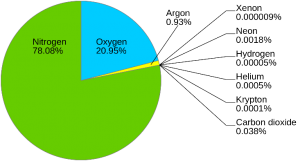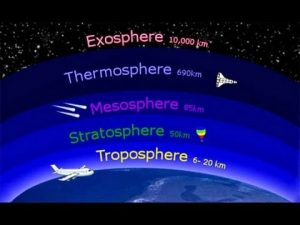Saturday, 27 February 2021
4G services in JK
4G services restored in JK after 500 plus days.
People from all spheres of life suffer a lot.
Only a few with access to Wi-Fi enjoy the lockdown and the crucial year of pandemic.
Friday, 26 February 2021
JKPSC CSE 2021 Notification (Final)
Friday, 13 November 2020
Atmosphere
EARTH’S ATMOSPHERE
The atmosphere is a thick gaseous envelope that surrounds the earth and extends thousands of kilometers above the earth’s surface. Much of the life on the earth exists because of the atmosphere otherwise the earth would have been barren. In fact, the atmosphere directly or indirectly influences the vegetation pattern, soil type and topography of the earth.

Composition of the Atmosphere
The atmosphere is a mixture of several gases. It contains huge amount of solid and liquid particles collectively known as aerosols. Pure dry air consists mainly of Nitrogen, Oxygen, Argon, Carbon Dioxide, Hydrogen, Helium and Ozone. Besides, water vapour, dust particles, smoke, salts, etc. are also present in the air in varying quantities.
The chemical composition of atmosphere up to an altitude of about 90 km is uniform in terms of major gases-Nitrogen and Oxygen. This layer is called Homosphere. Above 90 km, the proportion of the gases changes with progressive increase in the proportion of lighter gases. This layer is known as Heterosphere. Nitrogen and Oxygen comprise 99% of the total volume of the atmosphere. But Nitrogen does not easily enter into chemical union with other substances.
It serves mainly as an agent of dilution and remains chemically inactive. Oxygen combines with all the elements easily and is most combustible. Carbon dioxide constitutes a small percentage of the atmosphere. It can cause the lower atmosphere to be warmed up by absorbing heat from the incoming short wave solar radiation from the sun and reflecting the long wave terrestrial radiation back to the earth’s surface.
Carbon dioxide is utilized by the green plants in the process of photosynthesis. Water vapour and dust particles are the important variables of weather and climate. They are the source of all forms of condensation and principal absorbers of heat received from the sun and radiated from the earth. Water vapour comprises 3-4% of the total volume of air.
However, the amount of water vapour present in the atmosphere decreases from the equator towards the poles. Nearly 90% of the total water vapour lies below 6 km of the atmosphere.
Structure of the Atmosphere
The atmosphere consists of almost concentric layers of air with varying density and temperature.

a) Troposphere:
- Lowest layer of the atmosphere
- The height of troposphere is 16 km thick over the equator and 10 km thick at the poles.
- All weather phenomena are confined to troposphere (e.g. fog, cloud, frost, rainfall, storms, etc.)
- Temperature decreases with height in this layer roughly at the rate of 6.5° per 1000 metres, which is called normal lapse rate.
- Upper limit of the troposphere is called tropopause which is about 1.5 km.
b) Stratosphere:
- The stratosphere is more or less devoid of major weather phenomenon but there is circulation of feeble winds and cirrus cloud in the lower stratosphere.
- Jet aircrafts fly through the lower stratosphere because it provides conducive flying conditions.
- Ozone layer lies within the stratosphere mostly at the altitude of 15 to 35 km above earth’s surface.
- Ozone layer acts as a protective cover as it absorbs ultra-voilet rays of solar radiation.
- Depletion of ozone may result in rise of temperature of ground surface and lower atmosphere.
- Temperature rises from -60°C at the base of the stratosphere to its upper boundary as it absorbs ultra-voilet rays.
- Upper limit of the Stratosphere is called stratopause.
c) Mesosphere
- Mesosphere extends to the height of 50- 90 km.
- Temperature decreases with height. It reaches a minimum of -80°C at an altitude of 80-90 km
- The upper limit is called mesopause.
d) Thermosphere
- It lies at 80 km to 640 km above the earth’s surface.
- It is also known as ionosphere.
- Temperature increases rapidly with increasing height.
- It is an electrically charged layer. This layer is produced due to interaction of solar radiation and the chemicals present, thus disappears with the sunset.
- There are a number of layers in thermosphere e.g. D-layer, E-layer, Flayer and G-layer.
- Radio waves transmitted from earth are reflected back to the earth by these layers.
e) Exosphere
- This is the uppermost layer of the atmosphere extending beyond the ionosphere.
- The density is very low and temperature becomes 5568°C.
- This layer merges with the outer space.
Thursday, 5 November 2020
40 Oneliner general science + 20 MCQ's @General Science (Chemistry )
Chemical properties of substances & their uses
Chemistry in Everyday life
1. The use of chemicals for the treatment of diseases is called
a) Chemotherapy b) radiotherapy
c) Physiotherapy d) Isothermtherapy
2. Aspirin is a/an
a) Antiseptic b) Antipyretic
c) Analgesic d) Both - b & c
3). 2-Acetoxybenzoic acid is called:-
a) Antiseptic b) Aspirin c) Antibiotic d)None
4. Which of the following is used for inducing sleep?
a) Paracetamol b) Bithional
c) Chloroquine d) Barbituric acid derivative
5. Which of the following is hypnotic ?
a) Acetaldehyde b) Metaldehyde
c) Paraldehyde d) NOTA
6. Arsenic drugs are mainly used in the treatment of
a) Jaundice b) typhoid c) Syphillis d) cholera
7. Amoxicillin is semi-synthetic modification of
a) penicillin b) streptomycin
c) tetracycline d)None
8. Commonly dettol is an antiseptic & is a mixture of
a) Cresol + Phenol b) Chloroxylenol+terpeneol
c) phenol+terpeneol d) NOTA
9. which of the following is employed as a tranquilizer?
a) naproxen b) tetracycline
c)Equanil d) Mifepristone
10. Which of the following is not antihistamine
a) Benadryl b) Avil c) cetirizine d) rantidine
11.A broad spectrum antibiotic
a)PCM b) penicillin
c) Aspirin d) chloramphenicol
12. Matched ( Already )
|
List 1 |
List 2 |
|
A. iodoform |
I.Antiseptic |
|
B. Iodex(methylsalicylate) |
ii. Pain balm |
|
C. Diethyl ether |
iii.Anesthetic |
|
D. BHC |
iv. Insecticide |
a) Chloramphenicol b) Penicillin
c) Ofloxacin d) aminoglycosides
14. In India, penicillin is manufactured at Hindustan Antibiotics in---- & is private sector industry
a) Pimpri b) Nashik c) Solapur d) udgir
15. Paul Ehrlich (German bacteriologist) synthesized medicine-Arsphenamine(Salvarsan) is containing ‘As’ metal used as
a) Antibiotic b) Analgesic
c) Antipyretic d) None
16. Which of the following form the base of talcum powder?
a) Magnesium hydrosilicate b) Zinc stearate
c) sodium aluminium silicate d) chalk
17. The common vehicle used in perfumes is
a) EtOH-H2O mixture b) Phenol+H2O mixture
c) Phenol-EtoH-H2O mix. d) Phenol+ H2O mix.
18. Phenol is used as
A) Antiseptic b) Disinfectant c) Both a&b d) None
19. NAD’s include :-
a) Antimicrobials b) tranquilizers
c) Analgesics d) Both b & c.
Tuesday, 3 November 2020
Most Expected MCQ's @ General Science
GENERAL SCIENCE (PHYSICS)
Q1. The SI unit of Dipole moment :-
A) sAm B) Cm C) Nm D ) NOTA
Q2. The SI unit of Capacitance is
A) C/V B) Wb C) Ohm-Sec D) A/m^2
Q3. How many wavelength of Kr(A=86) are there in 1m ?
A) 2134333.65
B) 652189.63
C) 1650763.73
D) NOTA
Q4. Calculate the number of degrees in 5 radian
A) 57.3 B) 286.5 C) 180 D) NOTA
Q5. The solid angle subtended by the periphery of an are 1Cm^2 at a point situated symmetrically at a distance of 5cm from the area is :-
A) 2 X 10 ^-2 Steradian
B) 4 X 10 ^-2 Steradian
C) 8 X 10 ^ -2 Steradian
D) NOTA
Q6.Which of the following is incorrect statement :-
A) Distance is a scalar & Displacement is a vector quantity
B) Distance is always negative
C) Displacement may be positive , negative or zero
D) The unit of distance & displacement is same( m)
Q7. Distance covered by vehicle is measured by
A) Odometer B) Sthetometer C) Meter D) NOTA
Q8. The change in velocity is 24m/s in time 12s, what will be the acceleration
A) 2m/s^2 B) 4 m/s^2 C) 6 m/s^2 D) NOTA
Q9. The bodies executing free falling motion have
A) equal momentum
B) equal velocity
C) Equal acceleration
D) equal force
Q10. The motion of a body around a circular path is an example of
A) uniform velocity , variable acceleration
B) uniform speed, uniform velocity
C) Uniform speed, Variable velocity
D) Uniform speed , Uniform acceleration
Q11. Audible range of frequency for hearing in case of human adult ear is
A) 20 to 20,000 Hz B) 20 Hz C) More than 20,000Hz D) NOTA
Q12. Full form of SONAR is
A) Solar organized navigation & ranging
B) Sound Navigation & ranging
C) Solar alert
D) NOTA
Q13. Which of the following is not transverse wave
A) Sound wave in gas
B) X-rays
C) UV-Vis Rays
D) Gamma rays
Q14. The sound waves travel fastest in
A) Solids B) Liquids C) Gases D) Vacuum
Q15. The unit of sound loudness is
A) Decibel B) Dobson C) Hertz D) NOTA
Q16. Myopia ( Short sightedness) is corrected by
A) Concave mirror B) Concave lens C) convex lens D) bi-focal lens
Q17. Astigmatism can be corrected by using
A) Cylindrical lens B) verifocal lens C) Convex lens D) NOTA
Q18. when light passes through a prism which colour shows minimum deviation
A) Red B) Violet C) Blue D) Black
Q19. Which metal is best reflector of light ?
A) Ag B) Au C) Cu D) Cr
Q20. The approx. diameter of normal eye ball is
A) 2.3cm B) 3cm C) 4cm D) Can't be determined
Q21. Tehri dam is on
A) Satluj river B) Ganga river C) Ravi D) Mahanadi
Q22. ------is the mixture of Methane, Hydrogen sulphide , Carbon dioxide
A) Bio-gas B) Petroleum C) Coal D) Natural gas
Q23. The main constituent of CNG is
A) Butane B) Ethane C) Methane D) Propane
Q24. The largest solar furnace in the world is located in
A) USA B) India C) France D) USSR
Q25. India exploded its first underground nuclear device at
A) Ranchi B) Kota C) Jaipur D) Pokhran
Q26. Which of the following is not example of Primary cell
A) Ni-Cd battery
B) Pb _H2SO4 battery
C) Both A & B
D) Dry Cell
Q27. The unit of electric current is
A) Joule B) amphere C) watt D) Newton
Q28. The device that measures potential difference is
A) ammeter b) Voltmeter C) Galvanometer D) NOTA
Q29. Neon Lamp was invented by
A) Georges Claude B) J. Schweigger C) W.carrier D) NOTA
Q30. Who invented Dynamite
A) Alfred Nobel B) Thomson Edison C) Peter Henien D) NOTA
Click Here for other links.
2. chemistry 60 plus One-liner & MCQ'S
crops in India
Crops in India :- RABI Rabi is derived from Arabic word which means spring. KHARIF Kharif is derived from the Arabic word which means Aut...

-
Crops in India :- RABI Rabi is derived from Arabic word which means spring. KHARIF Kharif is derived from the Arabic word which means Aut...
-
Weather & Climate Of J&K Q1.Ice Cold season from Mid January- Mod March is known as Shishur Retkol/ Grisham Sonth/...



























